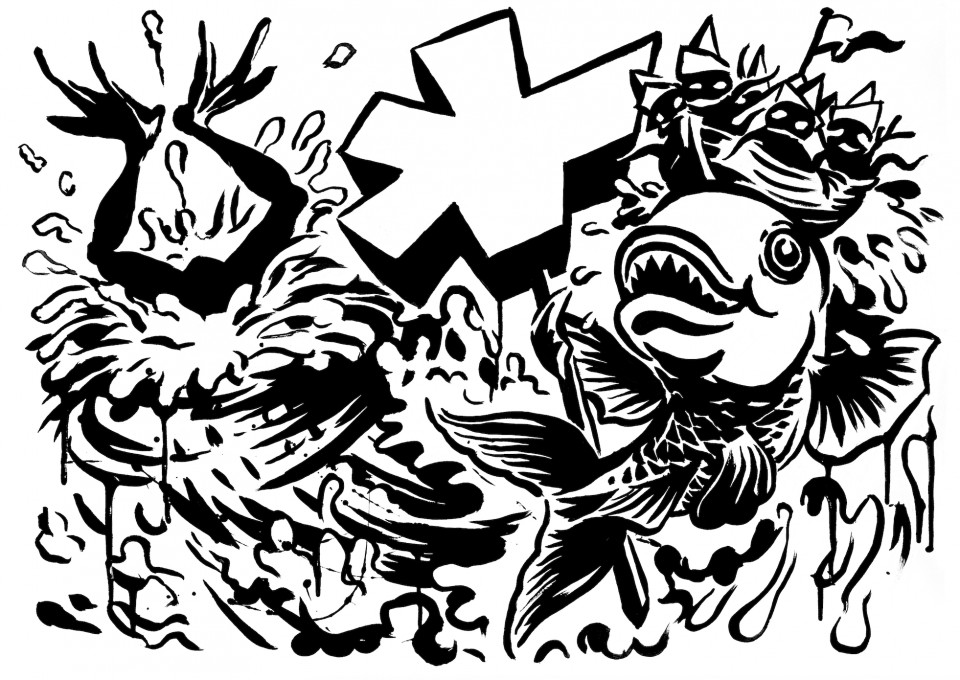In this final lecture of the module where Susanna Edwards talks with Maziar Raein, there was so much useful and interesting information that I am not really sure how to begin writing about it. Therefore, I thought I might just highlight here some of the things he said that resonated with me most, as well as taking a closer look at some of the references he made while talking to Susanna.
Thought-provoking quotes from this week’s lecture from Maziar Raein, which I will take forward with me to other modules, as well as my own design practice:
“Critical thinking really has to lie behind everything, before you pick up the pencil, before you open up the computer screen, before you take your first step towards making things. What are the thinking processes? How and where are you? Being reflective about your own thinking processes”.
“I think what we mean by the term ‘craft’ is a depth of understanding of detail and moving from that rich knowledge, that’s almost tacit, that’s unsaid, that’s in your body, it’s about the way you work, it’s about the way you use ink, colour, paper, the computer program knowledge that you need, the way you can, I don’t know, design a plugin in design to make it do something, that to me is craft. Not this idea of maintaining tradition and I think that’s an important term to define for younger designers”.
“And years later I’ve begun to understand, the edges of practice are really interesting at the moment. The edges of politics are really interesting at the moment. The edges of the way we operate in the world. The edges of our ethics and value systems. Our own personal values and how we then transfer those to public values…I think that’s the challenge for young designers, your students who are listening to this I hope will rise to that challenge of what are my sensibilities and how do I formulate them and how do I reflect on them?”
From the quotes that I have highlighted, it is evident that when it comes to moving forward in graphic design, Maziar Raein had some very constructive advice to offer – think critically and reflectively and consider problems from all perspectives, even if not necessarily the most obvious one. Recognise that although graphic design today may be different from those who went before us, it is no less a craft in its own right. Understand what your own values are and decide how to integrate those into your work. Decide how you can reflect those values through your work, in a way which can benefit others.
Richard Wentworth
1: Chok (2014), Lisson Gallery
2: Plume (2012), Lisson Gallery
3: Tract (from Boost Wham)
4: Havana (2015), Lisson Gallery
Richard Wentworth is one of the artists mentioned by Raein during this final lecture. His work, which includes both sculpture and photography, has had a significant impact on British art since the 1970s. Wentworth makes use of everyday objects in his sculptures, transforming and manipulating them into works of art. In doing so, he challenges viewers understanding of their original purpose and function, by locating them in unconventional arrangements in which they have no relation to each other. In doing so, he encourages members of the public to look at their environment from alternative perspectives. Similarly, in his photography, he often captures the unlikely situations in the everyday, which often go unnoticed.
His work in many way demonstrates many of the things we have been asked to think about throughout this module and therefore, it feels appropriate for Raein to have highlighted it here.
Ryan Gander
1: Conditions that will reshape you, 2018, Lisson Gallery
2: The End, 2020, Lisson Gallery
3: Dominus Illud Opus Populare, 2016, Lisson Gallery
4: Chronos Kairos 88.88, 2023, Lisson Gallery
Raien also referred to Ryan Gander in the lecture – an artitst I had not encountered before. Although a British artist, he has attracted global attention for the diversity of his artwork which includes sculpture, film, writing, graphic design, installation, performance. Using associative thought processes, he connects the everyday with the obscure; the unnoticed with the routine. If I were to describe Gander’s work, I would say that it fails to provide all the answers. Instead, it encourages viewers to formulate their own associations and connections; to develop their own solution to the artists problem; to script their own narrative.
Raien made reference to an article of Gander’s in which he talked about loose associations and while I could not find it, I was able to find a transcript of his Loose Associations lecture/presentation/performance (see sources below) and have very much enjoyed reading through it. Again, I feel that as an example of an artist that considers his viewers to make sense of his artwork from alternative perspectives, it was a really fitting recommendation to end the module with.
Sources:
Berger, John. (2014). The Shape of a Pocket. Bloomsbury Publishing. Kindle Edition.
Gander, Ryan. (2007). Loose Associations and Other Lectures. Available at: https://inputparty.nl/wp-content/uploads/2019/02/gander-ryan-loose-associations.pdf. (Accessed on: 11 December 2023).
Lisson Gallery. (2023). Richard Wentworth. https://www.lissongallery.com/artists/richard-wentworth. (Accessed on: 11 December 2023).
Lisson Gallery. (2023). Ryan Gander. Available at: https://www.lissongallery.com/artists/ryan-gander. (Accessed on: 11 December 2023).












Leave a comment